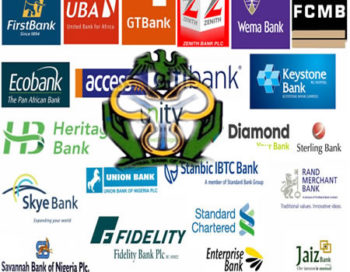Salary Structure of Microfinance Banks in Nigeria (2026)
To know how much Microfinance banks pay in Nigeria as monthly salary, one must be aware that there is a disparity between what an entry level staff earns at any commercial bank to what one earns as a staff of a microfinance bank. Even if both are financial institutions, there functions differs as is with their salary structures.

According to CBN data, there are over 890 registered microfinance banks in the country. All at both state, regional and national level are licensed to operate in the country. AB Microfinance bank still remains the highest paying microfinance bank in Nigeria with their entry level staff collecting an average of ₦120,000 as starting salary per month.
If you’re searching for a decent opportunity to get in the finance industry in Nigeria, one of the registered microfinance banks can be an excellent starting point. It’s one of the organizations that fresh banking and accounting graduates looking for renowned financial institutions to begin their careers could consider. Do you want to know how much money these employees make per month? Read on to discover about the salary structure of the country’s microfinance institutions.
SALARY STRUCTURE OF MICROFINANCE BANKS IN NIGERIA (2026)
Microfinance banks are key players in the financial industry just like the normal banks. These banks are operated solely for the purpose of offering loan to customers.
This article will highlight the different salary structure of the different positions in Microfinance banks in the country. However, the average wage in a Microfinance Bank in Nigeria is about ₦103,000, as per the salary scale. Take a look at the whole wage structure for various roles in the country’s microfinance banks.
ADMINISTRATIVE OFFICER
Administrative officers are the high rank employees in microfinance banks and any other financial institution.
One of microfinance bank’s middle jobs is administrative officer. Working there, you’ll serve as a liaison between companies and employees. The major purpose of this post is to manage administrative chores in general.
The wage structure for an administrative officer at Microfinance Banks in Nigeria begins at ₦87,000 per month.
ACCOUNTANT
Next on the salary structure level is the accountants. The creation of records for transaction documentation is the major responsibility of an Accountant in a microfinance bank. As a result, every accountant is in charge of meticulously preparing financial papers.
The starting salary for an accountant at Microfinance Banks is ₦89,000. The money is paid on a monthly basis.
CLIENT SERVICE REPRESENTATIVE
This officer is accountable for any engagement with clients’ post-sale and post-trade operations, as implied by the position’s name.
The key objective is to address the requirements of the customers. As a result, anytime a customer has a question, the client support officer should be prepared to respond.
If client help is required, the client service is the first point of contact. As a result, he maintains a positive working relationship with a client. It also features the bank’s assistance functions for dealing with client issues.
If you pick this job, you will be expected to bring value to the bank’s connection with its customers. You’ll need to set up records and meetings so that you can keep track of everything.
Client support officers earn a fair amount of money that’s quite befitting. Several microfinance banks in Nigeria pay their client support officers ₦100,000 on a monthly basis.
HEAD OF STRATEGY DIVISION
In the Microfinance banks wage structure, the Head of Strategy Division might earn around ₦138,000 per month. This is one of the bank’s highest-ranking positions.
The primary responsibility of the head of strategy role is to establish plans and forecast the bank’s future growth. The strategy section comes up with new ways to advertise and distribute the bank’s services to more people.
The role of head of strategy division is that of a team leader. As a result, he assumes accountability for not just one individual, but the entire office of workers. They collaborate as a group to come up with innovative ideas for the bank.
MICROFINANCE BANKS: AN OVERVIEW
What is the purpose of microfinance? Approximately two-thirds of the world’s population is unable to access traditional financial markets. Low-income persons generally lack collateral, preventing them from taking out a loan, saving money, or investing for the future.
Microfinance is the offering of fundamental financial services to low-income yet economically active people, which including loans, savings accounts, and insurance. Microfinance refers to the supply of tiny loans (=micro credits) to micro-entrepreneurs in most cases.
The concept of microfinance, on the other hand, is not new; it can be traced back to the 150-year-old philosophy of self-help and cooperation created by savings banks and co – operative banking organizations.
Any organization regulated by the Central Bank of Nigeria (CBN) to provide financial services such as savings and deposits, loans, domestic money transfer, and non-financial services to microfinance clients is known as a microfinance bank (MFB).
Microfinance bank focuses on low-income families, as per the primary idea of this financial institution. It was founded as a non-profit organization at first. Although this institution was founded in 1980, it only received financial permission in 2010. LAPO now gives microcredits to the country’s low-income inhabitants.
A Microfinance Institution (MFI) is a financial services provider for MSME – Micro, Small, and Medium Enterprises. They’re mostly found in underdeveloped countries and come in a variety of sizes and scopes.
They frequently begin as non-governmental organizations (NGOs) that focus solely on loans before evolving into full-fledged banks that provide all basic financial services.
Micro-entrepreneurs’ lack of “conventional” collateral is offset by a careful examination of their personal living conditions and close communication between both the microfinance institution as well as the micro-entrepreneur.
Microfinance institutions are familiar with their clients and meet with them on a regular basis to assist and advise them.
Microfinance institutions frequently lend money to modest teams of individuals who are collectively responsible for repaying the debt before deadline.
In poor nations, the social network is typically very strong, ensuring that everyone wants to repay the loan that would save reputation. Micro-entrepreneurs pay back microfinance institutions in a staggering 95-98 percent of the time.
CONCLUSION
I’m sure you came to this page in search of information about the salary structure of Nigerian microfinance institutions. We supplied information on that throughout the course of this article. But first, let’s go over the points we brought up. The average salary structure for Microfinance Banks is ₦103,000 per month. This might not be the finest pay in Nigerian banking, but it’s a solid start. Furthermore, microfinance banks may offer a variety of other exciting opportunities to those who choose to work for them.
